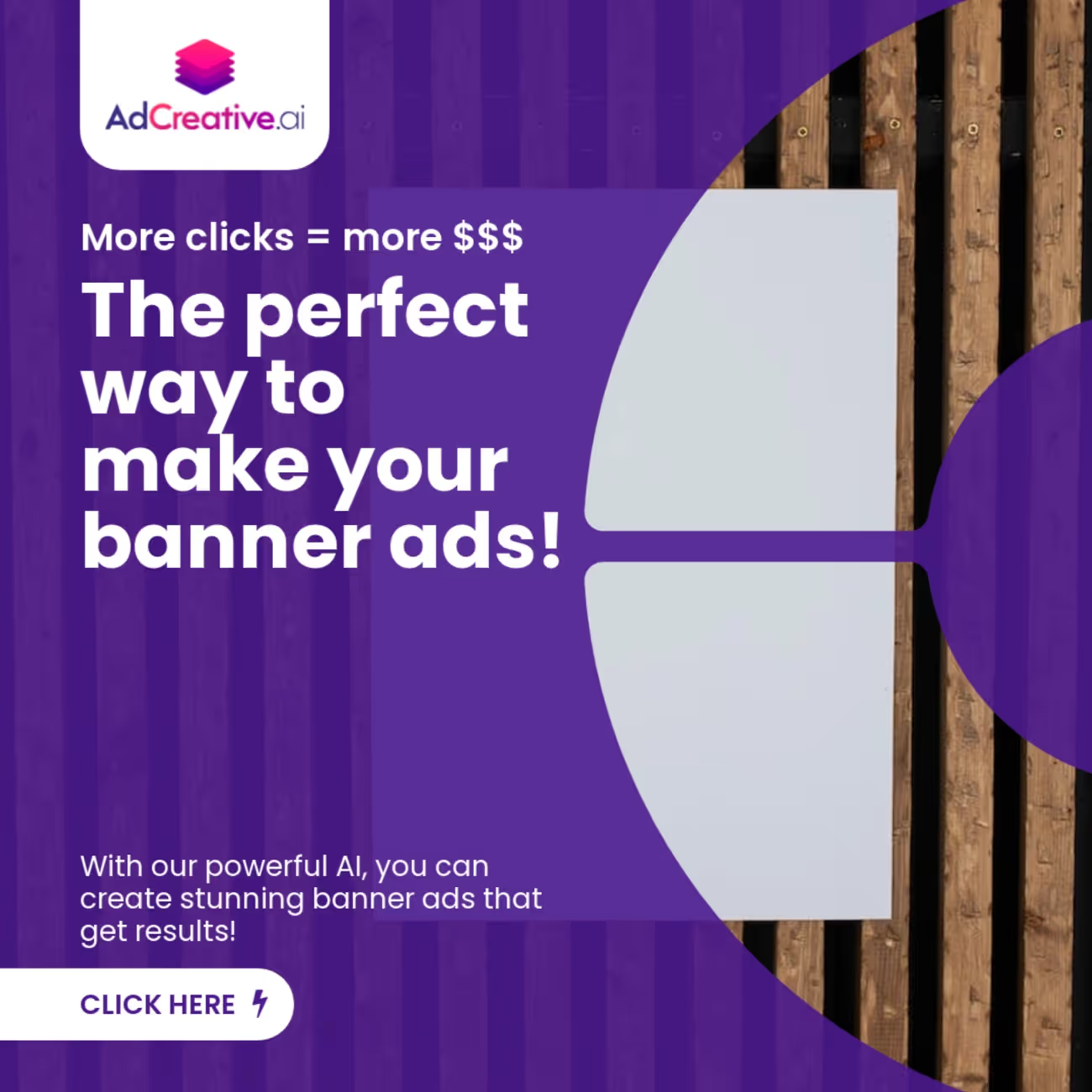What affects the click-through rate of an ad creative?
As an agency owner and solopreneur, it can be frustrating if the ads do not convert. However, even established brand marketing teams may sometimes need help understanding what’s working and not. This blog post will look at the factors that affect your click-through rate and shed light on the new ways with which you can increase your CTR.
Creatives refer to an ad's visual and textual elements, such as images, headlines, and copy. These elements are essential in advertising because they are the primary way advertisers communicate their message and value proposition to potential customers.
There are several reasons why creatives are the most vital aspect of advertising:
Attention: Creatives are the first thing that users see when they encounter an ad, and they grab the user's attention.
It also determines whether or not they will continue to engage with the ad.
Branding: Creatives are vital in establishing and reinforcing a brand's identity and messaging. The visuals and copy used in an ad should be consistent with the company's overall branding and its products or services.
Persuasion: Advertising aims to persuade potential customers to take a specific action, such as making a purchase or visiting a website. Creatives are the primary way advertisers communicate their value proposition and try to persuade users to take action.
Engagement: Creatives are also crucial for engaging users and keeping their attention. High-quality creatives that are visually appealing and relevant to the target audience are more likely to keep users engaged and increase their chances of taking the desired action.
Overall, the effectiveness of an ad depends mainly on the quality and relevance of its creatives, which is why they are considered the most critical aspect of advertising.

What aspects of an ad creative are the most important ones?
There are several aspects of an ad creative that are important for its effectiveness:
- Headline: The headline of an ad is often the first thing that users see, and it can be a critical factor in whether or not they engage with the ad. A clear, compelling headline that accurately reflects the ad's content can increase the chances of users clicking on the ad and taking the desired action.
- Images: Visual elements, such as images and graphics, are essential for capturing the user's attention and engaging them with the ad. High-quality, relevant images can help convey the ad's message and value proposition and increase the chances of users taking the desired action.
- Copy: The written content of an ad, including the main body of text and any supporting information, should be clear, concise, and relevant to the target audience. Well-written copy that effectively communicates the ad's value proposition can help persuade users to take the desired action.
- Call to action: A call to action is a statement or button that prompts users to take a specific action, such as visiting a website or making a purchase. A clear and prominent call to action can increase the chances of users taking the desired action.
- Landing page: The landing page users are directed to after clicking on an ad should be relevant to the ad and provide a seamless user experience. A poorly designed or unrelated landing page can decrease the effectiveness of the ad.

Why your ad creatives might be getting bad click-through-rates

Overall, the most critical aspects of an ad creative are those that effectively communicate the ad's value proposition and persuade users to take the desired action.
There are several reasons why an ad creative might have a low click-through-rate (CTR):
- Relevance: Users are likelier to click on an ad if it is relevant to their interests or needs. If the ad is not targeted to the right audience or does not use relevant keywords and language, it may have a low CTR.
- Quality: Users are likelier to click on an ad if it looks professional and visually appealing. If the ad creative needs to be better designed or uses low-quality images, it may have a low CTR.
- Headline: The headline of an ad creative is often the first thing that users see, and it can be a critical factor in whether or not they decide to click on the ad. If the headline needs to be more precise and more compelling, it may lead to a low CTR.
- Landing page: The landing page users are directed to after clicking on an ad should be relevant to the ad and provide a seamless user experience. If the landing page needs to be better designed or unrelated to the ad, it may decrease the CTR.
- Placement: The placement of an ad can also affect its CTR. Ads placed prominently or in prominent locations are more likely to be clicked on than ads that are hidden or hard to see.
Various factors, including relevance, quality, headline, landing page, and placement, can cause low CTRs. Identifying and addressing these issues can help to improve the CTR of an ad creative.
How to generate ad creatives using artificial intelligence for the best results
Generate Ad Creatives That Sell in Under 1 Minute! ⚡️ The Best Ad Creative Tool in the Market
There are several ways that artificial intelligence (AI) can be used to generate ad creatives for the best results:
Use AI to analyze data and identify patterns: AI can analyze data from past ad campaigns and identify patterns associated with high-performing ad creatives. This can inform the design and message of future ad creatives.
Use AI to generate multiple variations of ad creatives: AI can generate multiple variations of ad creatives, allowing advertisers to test combinations of images, headlines, and copy to determine which ones perform the best.
Use AI to optimize ad creatives in real-time: AI can be used to analyze the performance of ad creatives in real time and optimize them for maximum effectiveness. For example, AI can identify which images and headlines are the most engaging and adjust the ad creative accordingly.
Use AI to generate personalized ad creatives: AI can be used to create customized ad creatives based on the interests and characteristics of individual users. This can increase the relevance and effectiveness of the ad creatives.
Overall, using AI to generate ad creatives can help advertisers to optimize their ad campaigns and improve the performance of their ad creatives. However, it is essential to note that AI should be used with human oversight and judgment to ensure that the ad creatives are relevant, accurate, and comply with applicable regulations or guidelines.




